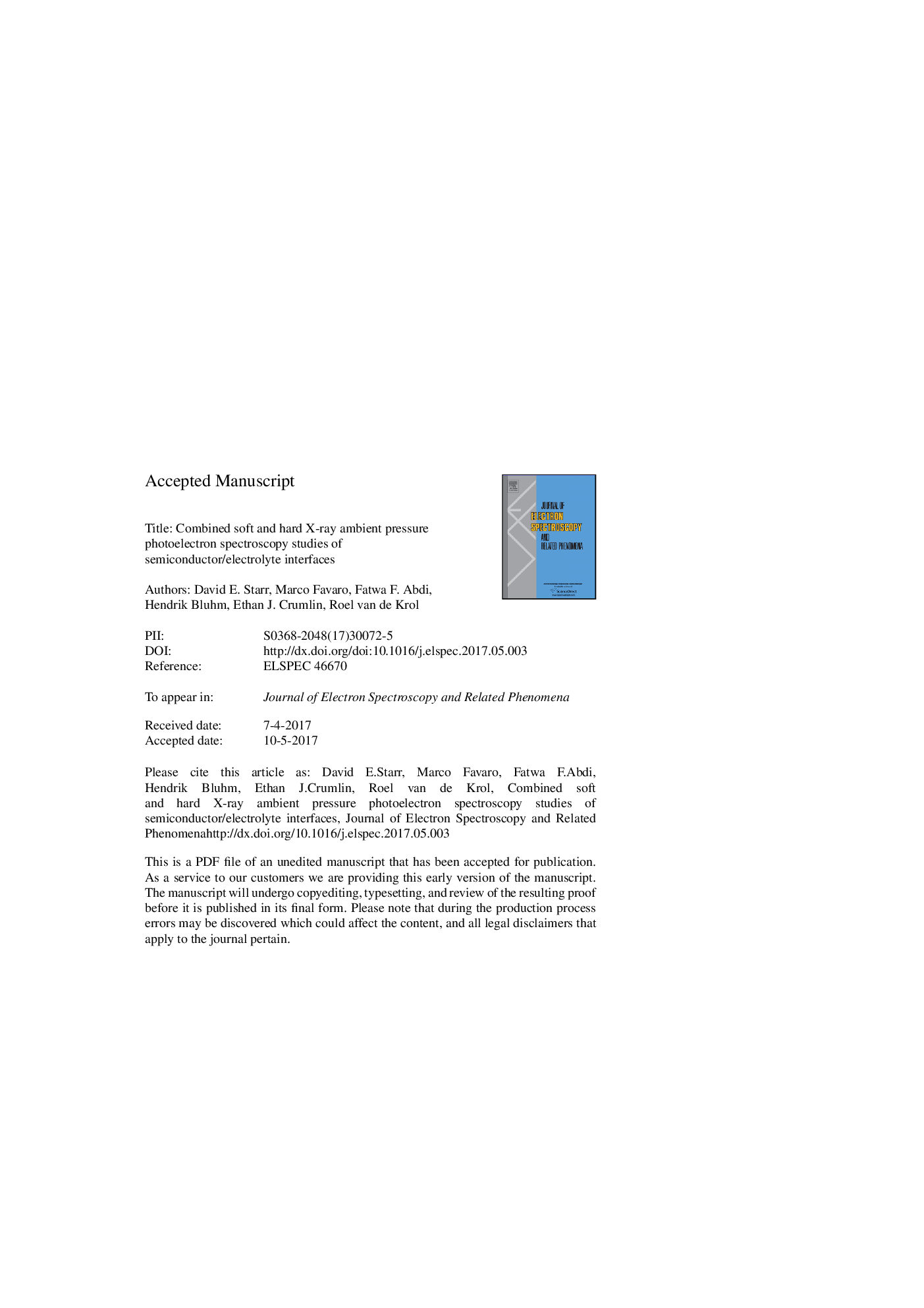| Article ID | Journal | Published Year | Pages | File Type |
|---|---|---|---|---|
| 7839510 | Journal of Electron Spectroscopy and Related Phenomena | 2017 | 34 Pages |
Abstract
The development of solar fuel generating materials would greatly benefit from a molecular level understanding of the semiconductor/electrolyte interface and changes in the interface induced by an applied potential and illumination by solar light. Ambient pressure photoelectron spectroscopy techniques with both soft and hard X-rays, AP-XPS and AP-HAXPES respectively, have the potential to markedly contribute to this understanding. In this paper we initially provide two examples of current challenges in solar fuels material development that AP-XPS and AP-HAXPES can directly address. This will be followed by a brief description of the distinguishing and complementary characteristics of soft and hard X-ray AP-XPS and AP-HAXPES and best approaches to achieving monolayer sensitivity in solid/aqueous electrolyte studies. In particular we focus on the detection of surface adsorbed hydroxyl groups in the presence of aqueous hydroxide anions in the electrolyte, a common situation when investigating photoanodes for solar fuel generating applications. The paper concludes by providing an example of a combined AP-XPS and AP-HAXPES study of a semiconductor/aqueous electrolyte interface currently used in water splitting devices specifically the BiVO4/aqueous potassium phosphate electrolyte interface.
Related Topics
Physical Sciences and Engineering
Chemistry
Physical and Theoretical Chemistry
Authors
David E. Starr, Marco Favaro, Fatwa F. Abdi, Hendrik Bluhm, Ethan J. Crumlin, Roel van de Krol,
